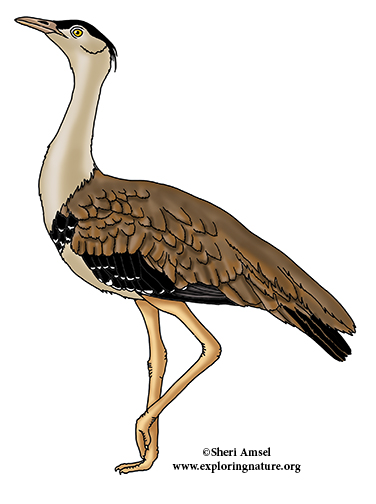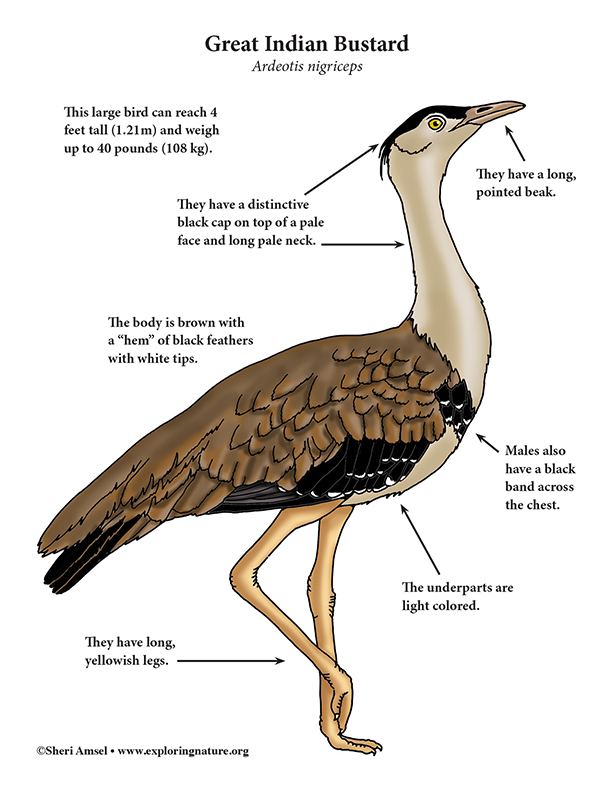

They are found in Western India and Eastern Pakistan. They are in greatly reduced from their historic range.
They live in arid, open grassland and shrublands.
This large bird can reach 4 feet tall (1.21m) and weigh up to 40 pounds (108 kg). They are considered one of the heaviest flying birds in the world. They have a long, pointed beak and distinctive black cap on top of a pale face and long, pale neck. The body is brown with a “hem” of black feathers with white tips. Males also have a black band across the chest. Males are heavier than females. The underparts are light colored. They have long, yellowish legs.
Though they can fly, they spend their time walking on long legs in dry grasslands and shrubby areas feeding on grass seeds and insects. Males are territorial during mating season and may behave aggressively toward each other by strutting back and forth and occasionally jumping against each other.
They eat whatever is available from grass, seeds and insects to small reptiles and mammals.
Males attract a mate with a booming mating call that can be heard for a long ways away. It is produced by an air filled pouch under the neck and jaw (called the gular sac). They nest on the ground. Females usually lay one egg (occasionally two). She warms them (incubates) for about a month. Chicks can feed themselves within a week of hatching and are fledged (can fly away) in a about a month. Males do not help raise the offspring.
They have been driven to near extinction by hunting, habitat loss and predation by dogs. They are considered critically endangered on the IUCN Red List.
Kingdom: Animalia
Phylum: Chordata
Class: Aves
Order: Otidiformes
Family: Otididae
Genus: Ardeotis
Species: Ardeotis nigriceps
When you research information you must cite the reference. Citing for websites is different from citing from books, magazines and periodicals. The style of citing shown here is from the MLA Style Citations (Modern Language Association).
When citing a WEBSITE the general format is as follows.
Author Last Name, First Name(s). "Title: Subtitle of Part of Web Page, if appropriate." Title: Subtitle: Section of Page if appropriate. Sponsoring/Publishing Agency, If Given. Additional significant descriptive information. Date of Electronic Publication or other Date, such as Last Updated. Day Month Year of access < URL >.
Amsel, Sheri. "Bustard (Great Indian)" Exploring Nature Educational Resource ©2005-2024. December 13, 2024
< http://exploringnature.org/db/view/Great-Indian-Bustard >

